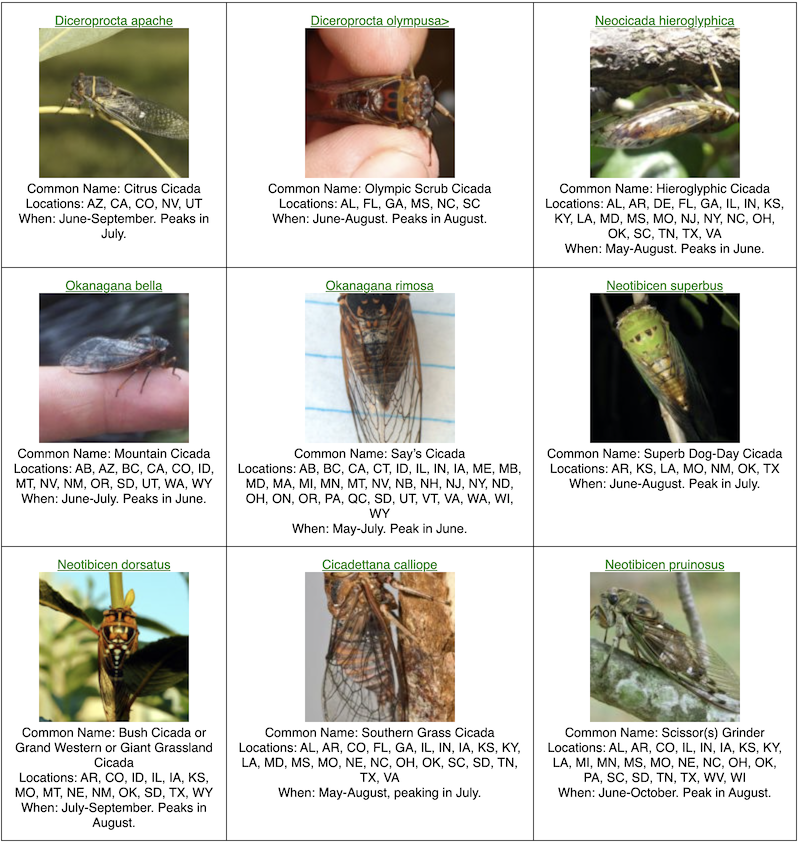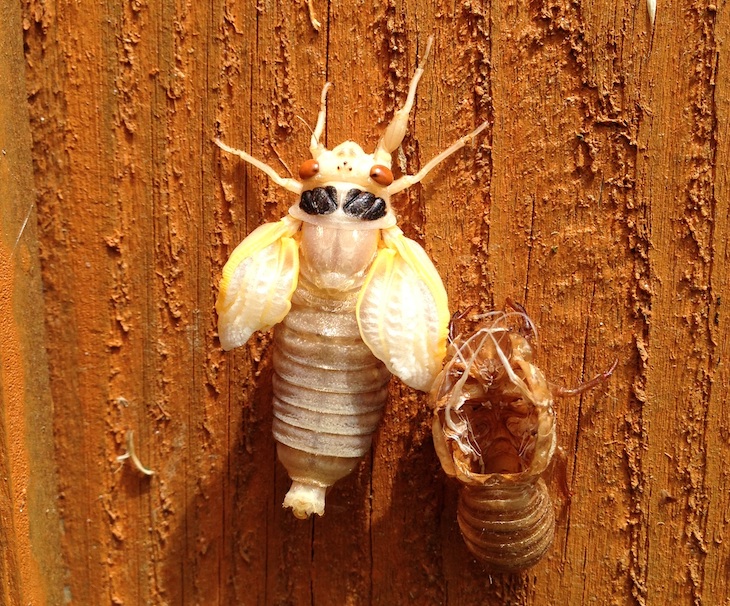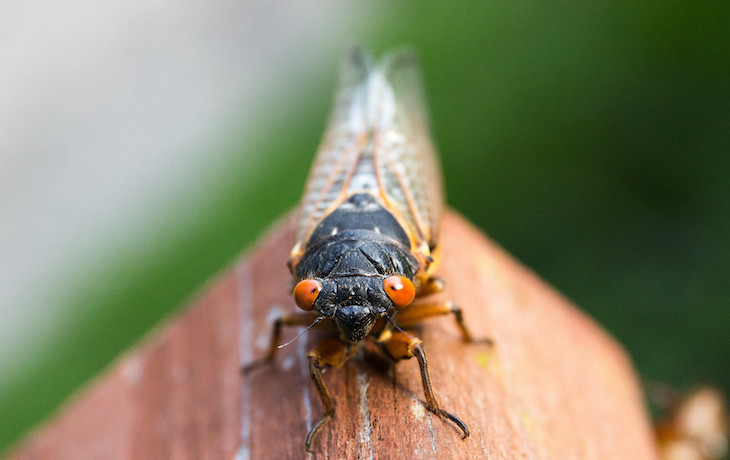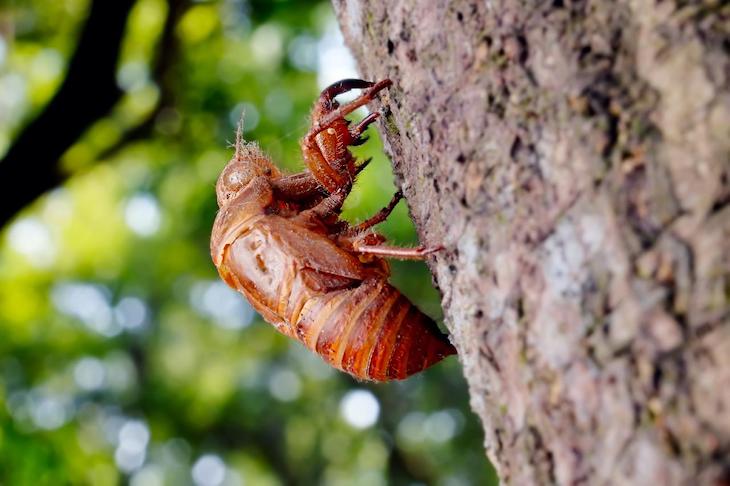The infamous Brood X cicadas came and went this summer, and won’t be back until 2038. But many adventurous eaters took that opportunity to experiment with different recipes and preparation methods.
Just because Brood X is gone, that doesn’t mean you have to wait 17 years to try foraging for cicadas. Many varieties come back every year, and in some places, they’re at their peak in August.
Summary:
- Don’t eat cicadas if you have a shellfish allergy, gout, or are nursing or pregnant. Children shouldn’t eat cicadas.
- Cicadas are common during the warm months, but the exact peak depends on your area.
- To find them, listen for the distinctive sounds and leftover shells from molting.
- The lighter / whiter the cicada, the better it is to eat. The darker ones are near end of life.
- Freeze them for 30 minutes to humanely kill them.
- Cicadas can be parboiled and fried, or there are a number of interesting ways to use them in recipes.
- Cicadas can be eaten raw, but there have been reports of food poisoning from doing so.
A food allergy warning
Proponents of edible insects argue that it’s really no different than eating shrimp or lobster. One of the similarities is that you shouldn’t eat cicadas if you have a shellfish allergy because they’re arthropods, just like the sea critters.
The FDA warns that cicadas are closely related to oceanic shellfish, and could trigger the same sort of allergic reaction.
Yep! We have to say it!
Don't eat #cicadas if you're allergic to seafood as these insects share a family relation to shrimp and lobsters. https://t.co/UBg7CwrObN pic.twitter.com/3qn7czNg53
— U.S. FDA (@US_FDA) June 2, 2021
The Cleveland Clinic also warns:
- Pregnant and breastfeeding mothers should avoid cicadas due to the potential for mercury contamination.
- For the same reason, young children shouldn’t eat cicadas.
- If you have gout, eating cicadas can cause flare ups.
How to find cicadas
Cicadas can be found across the entire United States, though most species are found in the Eastern half. They’re active between late spring through the fall, though the peak season depends on the cicada variety. For instance, the Say’s Cicada peaks in June, the Southern Grass Cicada peaks in July, and the Scissor Grinder peaks in August.

An easier way to tell if they’re active is to step outside and listen. They make a distinctive loud cacophony when they’re out and about:
The 17-year Brood X variety makes a slightly different sound that’s more like a cheap old sci-fi movie:
Up close and personal, cicadas are extremely loud, making a noise that resembles a scream. That’s due to their tymbal organ, which acts like a natural musical instrument. It can be startling, but cicadas are mostly harmless. They can’t sting and bites are rare — bites usually happen when they rest on your finger for a long time and confuse you for a plant. Omnomnom.
Another clue to cicada activity is empty shells from molting, which you can often find on trees and walls:
Picking cicadas
You don’t want to eat dark cicadas, as they’ve already experienced their final molt and have a hard exterior. The best cicadas to eat are the white ones in either their larval or teneral stage. The teneral stage is often considered the best for eating.

Mature cicadas also often have a fungus that gives them a nasty flavor. The fungus is totally bizarre. It’s sexually transmitted, makes them sex-crazed, and causes their butts to fall off:
The best time to find cicadas is early in the morning or at night. You may see tenerals on trees or on the ground:
You can also find larval cicadas underground. Look for empty cicada shells or penny sized holes in the ground to know where to dig. You can also look under logs and rocks:
Gather cicadas in a paper bag and throw them in the freezer for 30 minutes to humanely dispatch them. Harvest more than you need because the males don’t have a lot of “meat” but it’s difficult to tell the males and females apart.
Cicada recipes
How do you cook the little buggers once you have them? Most methods involve first boiling them briefly to soften them. Then you can simply pan fry them in oil.
Some eat them raw, but there have been reports of food poisoning from eating raw cicadas, so I recommend at least parboiling them.
But if you need a little help swallowing them, there are a slew of interesting recipes online:
- Charleston cheese grits and blackened cicadas with grilled onions and peppers
- Spicy popcorn cicadas
- Cicada cookies
- Tempura cicadas with sriracha aioli
- Crispy wok-tossed cicadas
- Chili garlic cicadas
- Caramel-chocolate popcorn cicadas
- Cicada ceviche
- Cicada spanish tortilla
- Crispy cicada salad
Do you have a favorite cicada recipe? As for me, I’d probably just feed them to my chickens.

